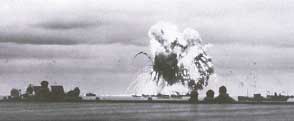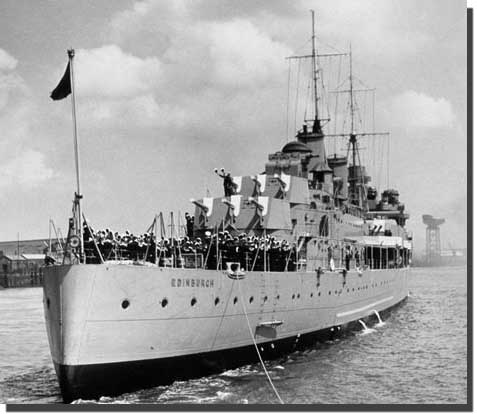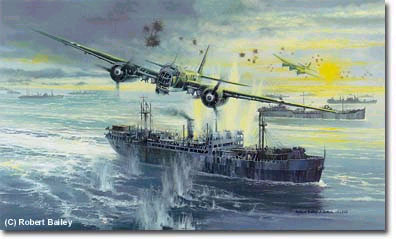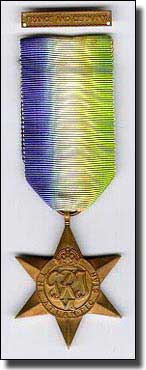|
WW2 Russian Arctic Convoys. Were they worth all the losses of both life and ships?
Introduction. Norway has already been overrun by Germany, although Britain had gone to her aid they withdrew their forces to assist France in her fight against the German Blitzkrieg threatening to engulf the whole country. In hindsight it may have been better to stay in Norway as their northern ports were used as German bases to harry the Arctic convoys fighting their way through to the ports of Murmansk, Archangel and the Kola peninsula, carrying war equipment sorely needed by Russian forces, as they battled against the Nazi invaders. Russian convoys.
It should be noted that statistics reporting on the total of merchant ships lost on both the east and westward trips will depend on the sources used. I have used :
It lists by name and country ships sunk on arctic convoys, and I believe is a most reliable source. If we add the Merchant and Naval ship losses together, as a % of ships involved on Russian convoys we have a 9% loss, which resulted in about 3,000 deaths of both merchant and navy sailors. Total tonnage delivered to Russia.
One must pose, was it all worth the loss of so many Merchant and Royal Navy sailors and could the equipment, a mere drop in the bucket compared to the vast quantity needed by Soviet forces, have been better used elsewhere by the Allies?
Infamous Convoy PQ 17. As Murmansk had been virtually closed down after heavy bombing, all but 8 American ships were bound for Archangel, however, the "Richard Bland" ran aground before clearing the Islandic coast, and was left behind. This fateful convoy was now reduced to 35 ships, but in the Denmark Strait, the convoy ran into heavy loose ice, and the American "Exford," was too damaged to continue, and finally turned back. The frozen bridge on HMS Kent on duty in the Arctic on duty in the Russian convoys. British Admiralty gets involved. Three Signals from the Admiralty. This message could have but one interpretation, the "Tirpitz," was out and at sea. Twelve minutes later, another signal arrived, timed, 2123 (9. 23P.M.) addressed to Broome, repeated to both Hamilton and Tovey, "Secret and Immediate" "Owing to threat from surface ships, convoy is to disperse and proceed to Russian ports." Finally, a third signal arrived in a further thirteen minutes, at 2136 (9. 36 P.M.) which seemed to upgrade the previous signal, "Secret and Most Immediate," "Admiralty to Escorts of P Q 17, C in C, CS One. Convoy is to scatter." These messages had but one meaning, at any moment, "Tirpitz," and her consorts would appear on the scene, this was the only interpretation to be made by the men at the centre of operations with P.Q. 17, then or even now. To quote "Woodman," in his "Arctic Convoys," "But this was not what happened at all." Hamilton stretched his orders to the absolute limit, holding his Easterly course for another 30 minutes, then he swung his force about, and retired to the West. Broome was also "very angry," he ordered Leading Signalman Elliot, to hoist the signal to scatter. '"A white pendant with a red cross." Commodore Dowding in "River Afton," repeated this signal at the dip, meaning he acknowledged this message, but did not understand it. Broome took "Keppel," alongside the Commodore's ship, and, using a megaphone, confirmed the order to an unbelieving Downing and his stunned Master, Captain Charlton. Broome hailed them, "Sorry to leave you like this-goodbye and good luck, it looks like a bloody business. " With a downward haul on the signal halyards, this order was executed, convoy P Q 17 ceased to exist, and Commodore Downing gave up his command. Individual Merchant Ships were now on their own. His ships now sped Westwards at 30 knots, expecting "Tirpitz," to appear at any moment. "Instead we wove our way amongst ice bergs, and some very suprised U-Boats who had been shadowing the convoy." An unease now crept over all the British Naval Ships, something seemed totally wrong, but "what?" The Admiralty 5 hours after their order to scatter, broke their radio silence to declare, "It is presumed enemy ships are North off Tromso, but it is Not repeat Not, sure they are at sea." German air reconnaissance discovered the Home Fleet moving North East to cover the withdrawal of Hamilton's group. If the German ships moved quickly against individual convoy vessels, there would be no threat from aircraft flown off British Carriers. By 1500 (3 P.M.) on the 6th. of July, "Tirpitz," "Scheer," and "Hipper," together with 7 Destroyers and 2 Torpedo Boats were out, and in the open sea. The Soviet Submarine, K21, sighted and attacked 'Tirpitz," they believed that this mighty German ship had been hit, in fact, the attack was abortive. A British Catalina and H.M.Submarine, "Unshaken," also sighted the German fleet, but all to no avail. Whilst U-Boats and Aircraft were successfully sinking ships of convoy P.Q 17, it was not considered necessary to put their surface ships at risk, and the German Naval Command, ordered the fleet to turn back and go home. Not withstanding protestations from the senior Naval staff on board the German ships, the Chief of Naval Operations, summed up the decision thus "Every operation by our heavy surface forces has been hampered by the Fuhrer's desire to avoid losses and reverses at all costs." If this episode of scattering the convoy, P.Q 17, seemed bizarre, some of the events that took place, merely confirmed this fact, e g. Lieutenant. Leo. Gradwell, a New Zealander, by birth, commanding the Anti-Submarine Trawler "Ayrshire," gathered the Panamanian "Troubador," the "Ironclad," and an American ship, "Silver Sword," and led them into the ice pack. "Troubador," carried a cargo of bunkering coal, and drums of white paint. Locked in the embrace of the ice pack, these ships stopped engines, banked their fires, and then proceeded to slop white paint over themselves, to so effectively camouflage their upper deck works, that they fooled reconnoitring aircraft, who then reported that the pack ice was impenetrable. Ships sailing independently. Ships sheltering in the ice. Finally, on 24th. of July, "Azerbaijan," "Silver Sword," "Benjamin Harrison," "Ironclad,". and "Troubadour," all arrived safely at Archangel. Then, the only outstanding ship, the beached "Winston Salem," after pumping fuel oil overboard, was freed, and crewed by survivors from other ships, she was sailed into Archangel on the July 28th. To Sum Up. Lost Equipment. German losses. Deaths of Allied Seamen. Sir Dudley Pound. Were the Arctic Convoys Worthwhile? This gesture to the Soviet Union of running the gauntlet of German forces and dreadful weather conditions may well have shortened the war in Europe if this vast amount of war material had been applied elsewhere, and had not been delivered to a rather ungrateful country ruled by the Dictator Stalin. Post war the former Allies and Russia would face up to a long period of the Cold War, whilst Russia occupied a great deal of central and the eastern part of Europe. Arctic Medal.
Recently the British Ministry of Defence has created an Arctic Star Emblem for all who served north of the Arctic Circle ie above 66 degrees 30 minutes North, for at least 24 hours in WW2. This Emblem may be worn on the ribbon of either the 1939-45 Star, or the Atlantic Star. As an 18 year Midshipman in HMAS Australia in 1940, we spent time off Bear Island, well above the Arctic Circle and so I qualified for this Award.
The design concept of the Arctic Emblem was agreed with Arctic veterans’ representatives. It is a small metal star, mainly enamelled white, with a red dot in the centre and above it a scroll with the words “The Arctic” in gold letters on a blue background. The star represents the Polar Star, the white colouring symbolises ice and the red centre represents the field of the flags of the USSR and Norway. Bibliography. Gregory, M.J. Under Water Warfare, The Struggle Against the Submarine Menace 1939- 1945, The Naval Historical Society of Australia Inc. Garden Island, Sydney, 1997, Reprinted 2002. Roskill, S.W. The War At Sea 1939-45 Vols 1-111, HMSO, London, 1976. Woodman, R. Arctic Convoys, John Murray, London, 1974. Wragg, D. Sacrifice for Stalin. Pen & Sword, Maritime, Barnsley South Yorkshire, 2005. |






